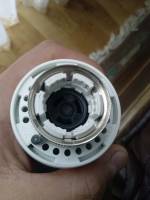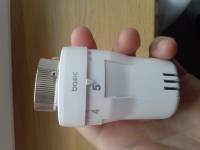FAQ
TL;DR: Up to 70 % of radiator-valve noise comes from excess differential pressure [CIBSE, 2019]. “Flow too fast and valves sing” [Elektroda, bartek1609, post #15060825] Fit a bypass or slow the pump.
Why it matters: Persistent squeaking wastes energy, disturbs sleep, and shortens valve life.
Quick Facts
• Typical Δp for silent thermostatic valves: 10–25 kPa [Danfoss, 2020].
• Variable-speed pumps cut electric use by ≈50 % vs. 3-speed models [EU Lot 11, 2013].
• Bypass valve (DN20) costs €25–€40 installed [MarketWatch, 2024].
• Acceptable radiator top–bottom ΔT: ≤10 °C [Elektroda, bartek1609, post #15060966]
• Pump heads in small houses: 2–6 m (0.2–0.6 bar) [Grundfos, 2021].
Where should I install a differential-pressure bypass in an open heating system?
Place it between supply and return just after the circulation pump, before the first branch. Keep the expansion tank connection upstream so the bypass never isolates it. Mount horizontally to ease bleeding. Size DN15–DN20 for ≤0.5 m³ h flow [Danfoss, 2020].
Why do my thermostatic radiator valves squeak or hum?
When the head throttles, high velocity jets hit the seat and vibrate. Above ≈30 kPa these vibrations become audible [CIBSE, 2019]. Play in old springs worsens it [Elektroda, BILGO, post #15062503]
Will a variable-speed pump stop the noise?
Often yes. Adaptive pumps sense rising resistance and cut speed, holding Δp near 15 kPa. Users report immediate response on Wilo Yonos Pico [Elektroda, BILGO, post #15065413]
How do I balance the system to reduce squeak?
- Set all valve preset rings to max N.
- Open one radiator fully as a bypass.
- Reduce pump to lowest gear giving ≤10 °C radiator drop [Elektroda, bartek1609, post #15060966]
What flow difference across a radiator is acceptable?
A 10 °C top-bottom drop means correct flow. Larger drops imply too little flow; noise with small drops signals excess flow [Elektroda, bartek1609, post #15060966]
Quick 3-step test: Is my pump auto-adaptive?
- Close a downstream valve halfway.
- Watch the pump LEDs; fewer lights mean reduced power.
- Restore valves. Changing LEDs confirm adaptive mode [Elektroda, bartek1609, post #15060966]
Can trapped air make valves whistle?
Yes. Bubbles collapse at the restricting seat, creating high-frequency noise. Bleed each radiator and vent the pump housing weekly [Caleffi, 2018].
Is running one radiator without a thermostatic head safe?
Yes, it gives the pump a constant path and protects against dead-heading, but the room may overheat [Elektroda, bartek1609, post #15060825]
What happens if the pump is oversized?
It can double design flow, boosting velocity above 1 m/s. Noise rises and energy waste exceeds 40 kWh/year [EU Lot 11, 2013].
Edge case: the system squeals even with only one thermostat fitted—why?
Single valve throttling forces full pump head across it, so it still exceeds acoustic limits. Bypass or pump tuning remains essential [Elektroda, Anonymous, post #15061372]
How much can a bypass valve save in electricity?
By letting the pump run at half speed, annual savings reach ≈25 kWh for a 60 W pump—about €7 at EU average tariffs [Eurostat, 2023].
Can pump dead-heading cause damage?
Yes. If all valves shut, some wet-rotor pumps overheat in under 30 s and seize [Grundfos, 2021].






